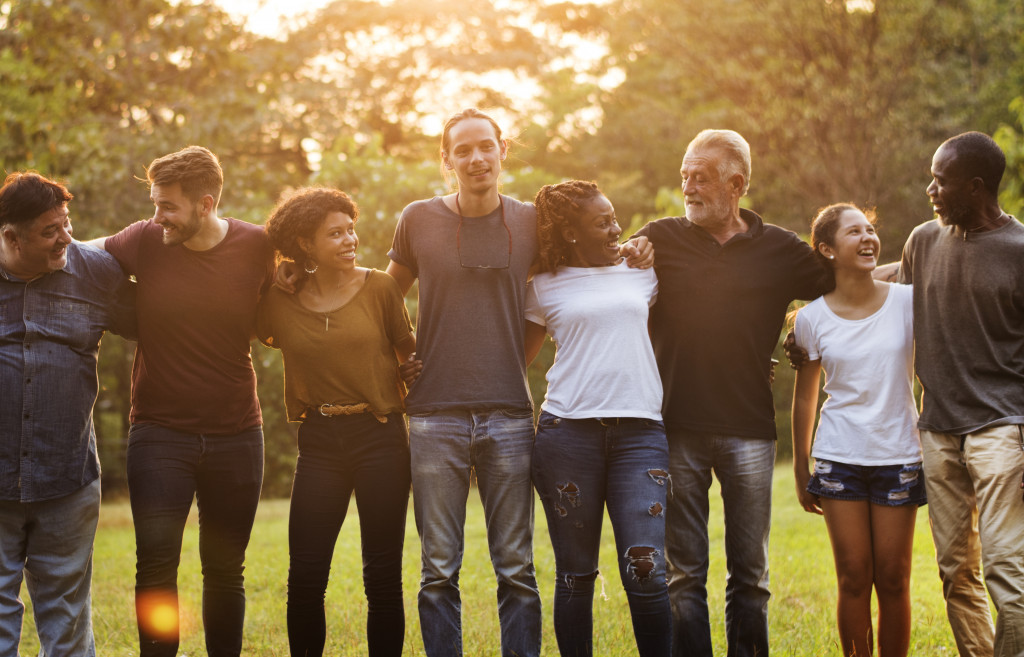- Racial diversity is essential for social growth but can present challenges.
- Communication barriers, stereotypes and prejudices, cultural conflicts, and economic inequality are common issues.
- Church services, educational programs, communal events, and volunteer opportunities can help bring people together.
- Fostering understanding among different cultures is key to creating a unified society.
- Working together to promote acceptance and respect will make communities more inclusive.
- It’s no secret that living in a diverse community comes with its challenges. Diversity is necessary for social growth, but it’s not always easy, especially in the face of racial differences.
For centuries, minorities have struggled to find their footing and a sense of belonging in white communities. Ignorance, prejudice, and outright hostility have created social rifts, making it hard for everyone to coexist peacefully. However, these same challenges have brought people together, creating opportunities for meaningful interactions and building strong relationships.
The Racial Diversity in The U.S.
It’s estimated that there are five major racial and ethnic groups in the United States: White, Black or African American, Asian, Native Hawaiian or Other Pacific Islander, and Hispanic or Latino. Each group is unique and brings its own set of experiences to a community.
The presence of these racial and ethnic groups has been key in helping build an inclusive society. This diversity fosters understanding and respect for others and more. But it can also lead to various problems. Here are some of them:

Stress #1: Communication Barrier
Effective communication can be challenging in a community where everyone speaks a different language or has different cultural practices. This often leads to misunderstandings and conflict, making it difficult for people to connect and establish a sense of belonging.
To create a more inclusive community, communities must strive to bridge language barriers by providing resources and translators for anyone who needs it. They can also create a culture of openness and respect for all cultures, allowing people to express themselves freely.
Stress #2: Stereotypes and Prejudices
When community members hold negative stereotypes and prejudices towards people of certain races or ethnicities, it creates an environment of tension and mistrust. These harmful biases can lead to discrimination, harassment, and violence, making it almost impossible for individuals to feel safe and respected.
To combat these prejudices, people must confront them openly and honestly. Education and awareness programs can also help dispel myths and stereotypes about certain ethnic groups, replacing them with empathy and understanding.
Stress #3: Cultural Conflicts
Every cultural group’s beliefs, values, and practices, sometimes clash. This can lead to disputes over seemingly trivial matters, escalating into full-blown conflicts.
To prevent cultural conflicts, people must promote cultural awareness and respect. Communities must try to learn about other cultures to find common ground, establish etiquette guidelines, and have open and honest conversations about our differences.
Stress #4: Economic Inequality
Racially and economically diverse communities often have pockets of lower-income neighborhoods that struggle with poverty, crime, and social isolation. These economic disparities can lead to resentment, distrust, and feelings of neglect.
To combat economic inequality, communities must work to create opportunities for all members of the community. This includes providing access to quality education, job training programs, and affordable housing. People can also support small businesses and entrepreneurs, creating jobs and economic growth in neighborhoods with limited resources.
Bringing Communities Together
Thankfully, various ways communities can be brought together despite racial diversity exist. Here are four effective ways:

Church Services
Many Americans are religious despite their race. Having reliable church services for your community to unite people is good. These services can offer a safe space for people to come together and learn about each other’s faith.
Education Programs
Educational programs focusing on diversity can help teach children the importance of acceptance and understanding from an early age. These programs should be tailored to different ages and ethnicities, allowing everyone in the community to benefit.
Communal Events
Events such as parades, festivals, or holiday celebrations are a great way for communities to unite despite their differences. These events allow people to enjoy activities while fostering mutual respect and tolerance.
Volunteer Opportunities
Volunteering is another effective way of bringing diverse communities closer together – individuals can bond over shared values and experiences by working side-by-side towards a common goal. It also allows people to learn about different cultures and beliefs in a positive environment.
Living in a racially diverse community can be difficult, but it’s also a fantastic opportunity for growth and understanding. With the right attitude and effective measures, communities can create a more unified society where everyone is respected and accepted. By working together, communities can make communities more welcoming, vibrant, and inclusive.

